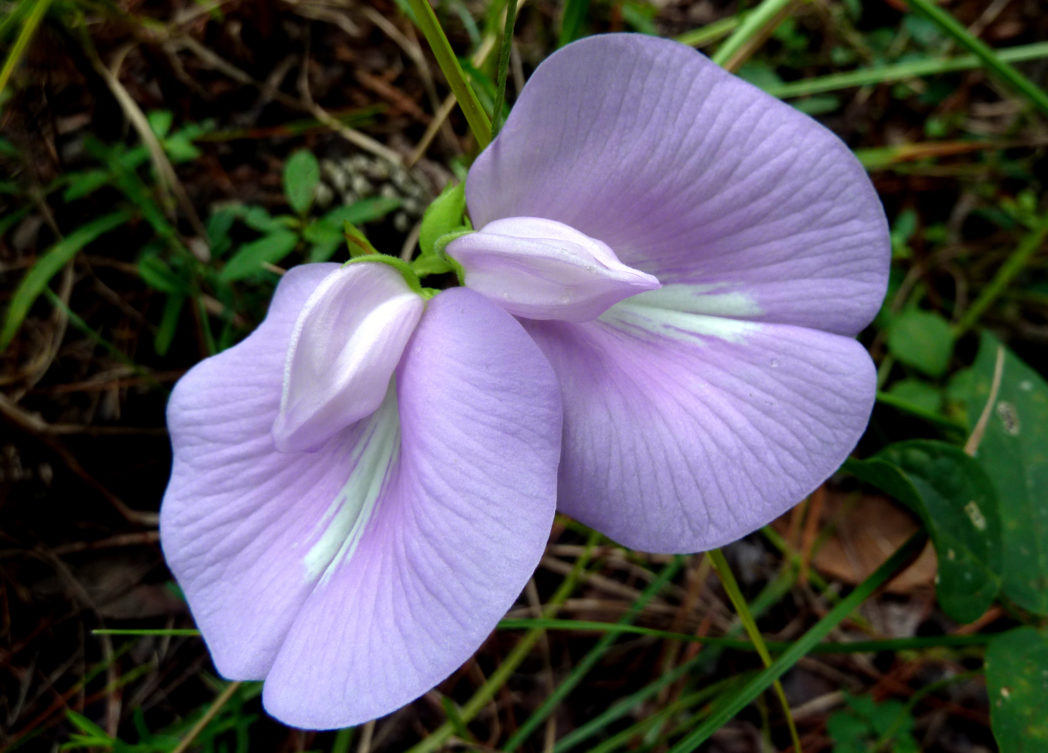Spurred butterfly-pea
Pictured above: Spurred butterfly-pea (Centrosema virginianum) by Eleanor Dietrich. Click on terms for botanical definitions. View post as a PDF.
Spurred butterfly-pea (Centrosema virginianum) is a trailing or climbing vine that occurs naturally in pine flatwoods, sandhills, coastal strands and interdunal swales. Its showy flowers typically bloom in summer, but can bloom spring through fall, or year-round in South Florida. This plant is pollinated primarily by bees, but is a larval host for Northern cloudywing and Long-tailed skipper butterflies.
Spurred butterfly-pea flowers are papilionaceous, meaning they are butterfly-shaped and highly specialized to allow for bee pollination. The upper petal, known as a banner, has the appearance of two spurred wings. They enclose two fused petals that form a keel in the center of the bloom. The center is white with purplish stripes; this guides bees (and other insects) to the nectar source below the keel. Blooms are inverted (upside down) and may be bluish, purple, pink or near-white. They are ephemeral, lasting only half a day, but typically bloom daily during flowering season. Leaves are alternately arranged and compound, comprised of 3 lanceolate to elliptic leaflets with entire margins. Stems are thin and delicate. Tendrils are absent. Seeds are borne in long, flattened pods.
Family: Fabaceae (Legume or pea family)
Native range: Nearly throughout
To see where natural populations of Spurred butterfly-pea have been vouchered, visit florida.plantatlas.usf.edu.
Hardiness: Zones 8A–10B
Lifespan: Perennial
Soil: Moist to dry, well-drained sandy or calcareous soils
Exposure: Full sun to minimal shade
Growth habit: 3–12’ long
Propagation: Seed, cuttings
Garden tips: Although generally not commercially available, Spurred butterfly-pea is easy to grow and adaptable to a variety of habitats. It is suitable for butterfly gardens as well as naturalistic landscapes and restorations

